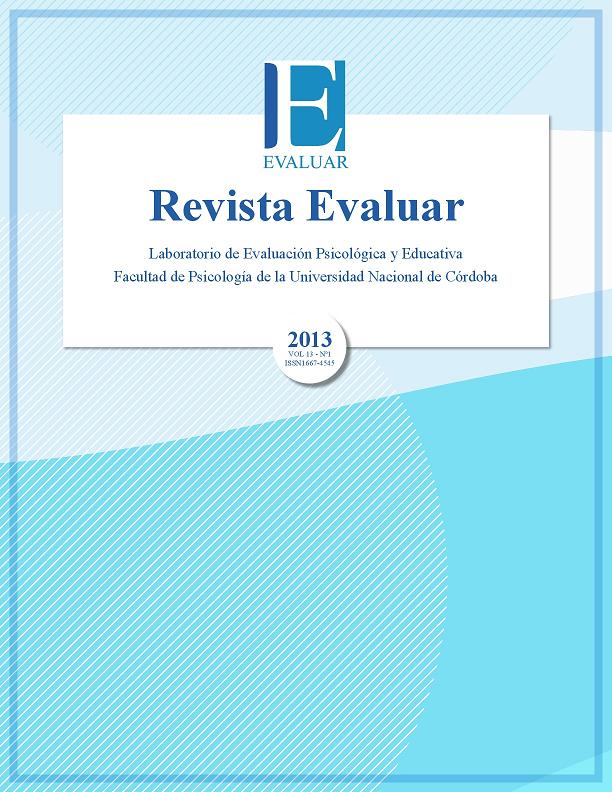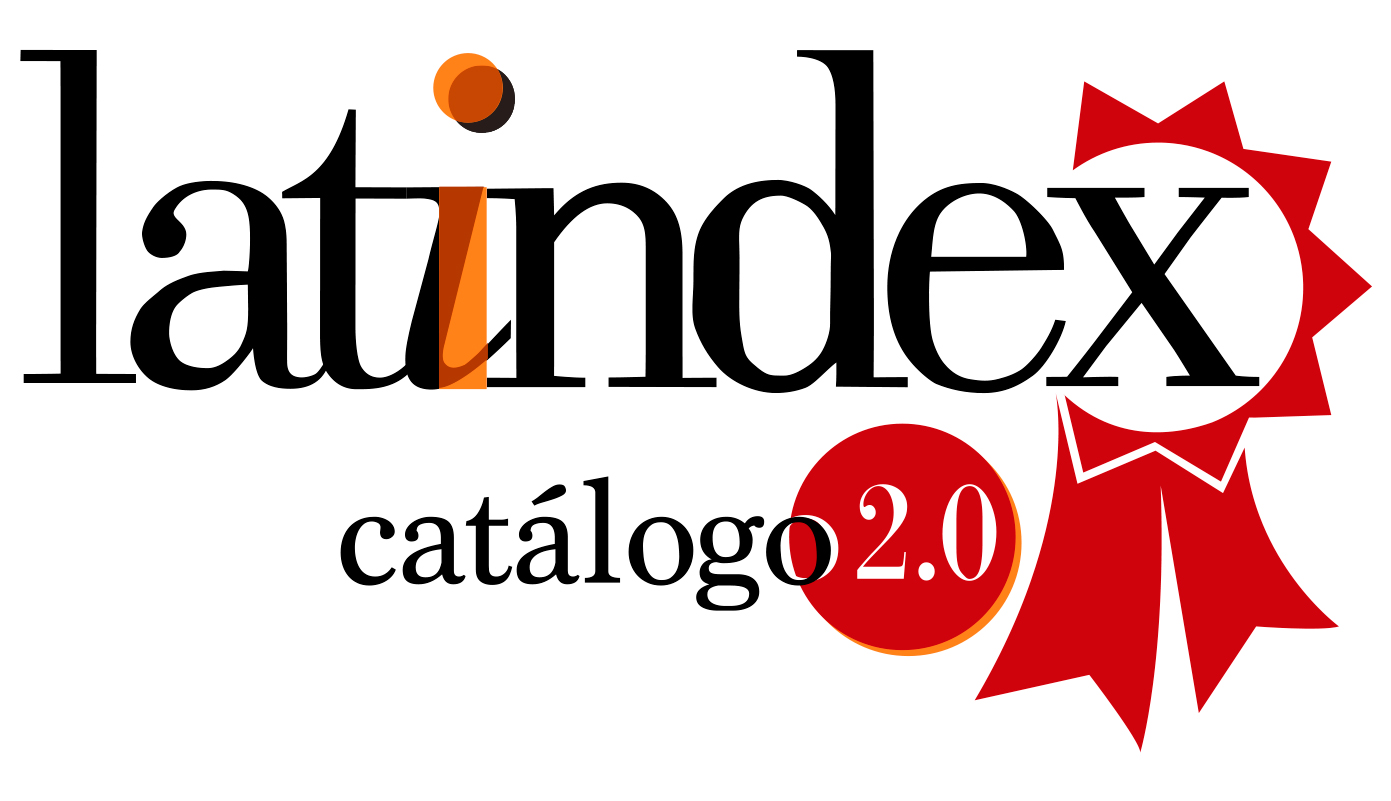Psychometric properties of the Optimal Experiences Brief Inventory (Flow)
DOI:
https://doi.org/10.35670/1667-4545.v13.n1.6796Keywords:
experiencia óptima, actividades, adolescentes, validaciónAbstract
The optimal experience or Flow refers to situations in which individuals are engaged in activities for intrinsic motivation in achieving great enjoyment. The aim of this work is to present the validation of the Brief Inventory of Optimal Experiences in a sample of adolescents. The Brief Inverntory of Optimal Experiences, along with external measures was administered to a sample of 211 adolescent from the Autonomous City of Buenos Aires, Argentina. They had with a mean age of 14.26 years (SD = 1.21). The inventory includes 9 items, from which a total score of optimal experience is obtained. The psychometric properties of the instrument were analyzed by estimating the internal consistency and looking for evidence of validity. The results showed that the Brief Inventory of Optimal Experiences is valid and reliable instrument to assess optimal experiences (flow) among adolescent from the Autonomous City of Buenos Aires, Argentina.
Downloads
References
Arbuckle, J. L. (2006). AMOS 7.0. User’s Guide. Chicago, IL: SmallwatersCorporation.
Bakker, A. B. (2005). Flow among music teachers and their students: The crossover of peak experiences. Journal of Vocational Behavior 66, 26-44.
Bakker, A. B. (2008). The work-related flow inventory: Construction and initial validation of the WOLF Journal of Vocational Behavior, 72(3), 400-414.
Browne, M. W., & Cudeck, R. (1993). Alternative way of assessing model fit. In K. A. Bollen & J. S. Long (Eds.), Testing Structural Equation Models (pp. 8136-8162): Newbury Park: Sage Publication.
Byrne, B. (2010). Structural equation modeling with AMOS. Basic concepts, applications, and programming (2a. ed.). New York: Routledge.
Csikszentmihalyi, M. (1990). Fluir. Una psicología de la felicidad. Barcelona: Editorial Kairós.
Csikszentmihalyi, M., & Csikszentmihalyi, I. (1998). Experiencia óptima. Estudios psicológicos del flujo en la conciencia: Bilbao: Desclée de Brouwer.
Csikszentmihalyi, M., & Larson, R. W. (1984). Being adolescent. New York.
Csikszentmihalyi, M., Larson, R. W., & Prescott, S. (1977). The Ecology of Adolescent Activity and Experience. Journal of Youth and Adolescence,, 6(3), 181-294.
Csikszentmihalyi, M., & LeFevre, J. (1989). Optimal Experience in Work and Leisure. Journal of Personality and Social Psychology, 56(5), 815-822.
Chu, L.-C. (2010). Flow Experience of Knowledge Workers: A Case Study of a Taiwanese Consultancy. The Journal of International Management Studies, 5(2), 216-226.
Finneran, C. M., & Zhang, P. (2005). Flow in Computer-Mediated Environments: Promises and Challenges. Communications of the Association for Information Systems 15, 82 -101.
Fournier, J., Gaudreau, P., Demontrond-Behr, P., Visioli, J., Forest, J., & Jackson, S. (2007). French translation of the Flow State Scale-2: Factor structure, cross-cultural invariance, and associations with goal attainment. Psychology of sport and exercise, 8(6), 897-916.
Fritz, B. S., & Avsec, A. (2007). The experience of flow and subjective well-being of music students. 16, 2, 5-17.
García Calvo, T., Jiménez Castuera, R., Santos-Rosa Ruano, F. J., Reina Vaíllo, R., & Cervelló Gimeno, E. (2008). Psychometric Properties of the Spanish Version of the Flow State Scale. The Spanish Journal of Psychology 11(2), 660-669.
García Cueto, E., Gallo Álvaro, P., & Miranda, R. (1998). Bondad de ajuste en el análisis factorial confirmatorio. Psicothema, 717-723.
García, T., Cervelló, E. M., Jiménez, R., Iglesias, D., & Santos-Rosa, F. J. (2005). La implicación motivacional de jugadores jóvenes de fútbol y su relación con el estado de flow y la satisfacción en competición. Revista de Psicología del Deporte, 14(1), 21-42. Ghani, J. A., & Deshpande, S. P. (1994). Task characteristics and the experience of optimal flow in human-computer interaction. The joumal of Psychology, 128, 381-391.
Gouveia, M. J., Pais-Ribeiro, J. L., Moreira Marques, M., & Carvalho, C. M. (2012). Validity and Reliability of the Portuguese Version of the Dispositional Flow Scale-2 in Exercise. Revista de Psicología del Deporte, 21(1), 81-88.
Hu, L., & Bentler, P. M. (1998). Fit indices in covariance structure modeling: Sensitivity to underparameterized model misspecification. .Psychological Methods, 3, 424–453.
Hu, L., & Bentler, P. M. (1999). Cut-off criteria for fit indexes in covariance structure analysis: Conventional criteria versus new alternatives. Structural Equation Modeling, 6, 1-55.
Jackson, S., & Marsh, H. W. (1996). Development and validation of a scale to measure optimal experience: The Flow State Scale. Journal of Sport & Exercise Psychology, 18(1), 17-35.
Jackson, S., Martin, A., & Eklund, R. (2008). Long and Short Measures of Flow: The Construct Validity of the FSS-2, DFS-2, and New Brief Counterparts. Journal of Sport and Exercise Psychology, 30, 561-587.
Jackson, S. A., & Eklund, R. C. (2002). Assessing flow in physical activity: The Flow State Scale-2 and Dispositional Flow State Scale-2. Journal of Sport and Exercise Psychology, 24, 115–133.
Jackson, S. A., Kimiecik, J. C., Ford, S. K., & Marsh, H. W. (1998). Psychological Correlates of Flow in Sport. Journal of Sport & Exercise Psychology, 20, 358-378
Jackson, S. A., Thomas, P. R., Marsh, H. W., & Smethurst, C. J. (2001). Relationships between Flow, Self-Concept, Psychological Skills, and Performance. Jounal of Applied Sport Psychology, 13, 129-133.
Keller, J. (2008). Flow and Regulatory Compatibility: An Experimental Approach to the Flow Model of Intrinsic Motivation. . Pers. Soc. Psychol. Bull, 34(2), 196-209.
Kimiecik, J. C., & Jackson, S. A. (2002). Optimal experience in sport: A flow perspective. In I. T. Horn (Ed.), Advances in sport psychology. Champaign IL: Human Kinetics.
Leibovich, N. (2009). El concepto de flow (fluir) en el trabajo. Aristeo, 1(1), 93-106.
Leibovich, N.; Schufer, M. & Muiños, R. (1998). Ecoevaluación psicológica. Las figuras humanas en contexto familiar y escolar. Buenos Aires: Eudeba.
López Torres, M., Torregosa, M. S., & Roca, J. (2007). Características y Relaciones de "Flow", Ansiedad y Estado Emocional con el Rendimiento Deportivo en Deportistas de Elite. Cuadernos de Psicología del Deporte, 7(1).
Martin, A. J., Liem, G. A., Coffey, l., Martinez, C., Parker, P. P., Marsh, H. W., & Jackson, S. A. (2010). What Happens to Physical Activity Behavior, Motivation, Self-Concept, and Flow After Completing School? A Longitudinal Study. Journal of Applied Sport Psychology, 22, 437-457. Martínez Arias, R. (1995). Psicometría: Teoría de los tests psicológicos y educativos.: Madrid: Síntesis.
Mesurado, B. (2008). Validez Factorial y Fiabilidad del Cuestionario de Experiencia Óptima (Flow) para niños y adolescentes. RIDEP 1(25), 159 -178.
Moreno, J. A., Alonso, N., Martínez Galindo, C., & Cervelló, E. (2005). Motivación, disciplina, coeducación y estado de flow en educación física: Diferencias según la satisfacción, la práctica deportiva y la frecuencia de práctica. Cuadernos de Psicología del Deporte, 5(1-2), 225-243.
Moreno Murcia, J. A., Cervelló Gimeno, E., & González-Cutre, D. (2008). Relationships among Goal Orientations, Motivational Climateand Flow in Adolescent Athletes: Differences by Gender. The Spanish Journal of Psychology, 11(1), 181-191.
Roberts, B. W., Walton, K. E., & Bogg, T. (2005). Conscientiousness and health across the life course. Review of General Psychology, 9, 156-168.
Rodríguez-Sánchez, A. M., Schaufeli, W. B., Salanova, M., & Cifre, E. (2008). Flow experience among information and communication technology users. Psychological Reports, 102, 29-39.
Salanova, M., Bakker, A. B., & Llorens,S. (2006). Flow at Work: Evidence for an Upward Spiral of Personal and Organizational Resources. Journal of Happiness Studies, 7, 1–22.
Salanova, M., Martínez, I. M., Cifre, E., & Schaufeli, W. B. (2005). ¿Se pueden ivvir experiencias óptimas en el trabajo? Analizando el flow en contextos laborales. Revista de psicología general y aplicada, 58(1), 89-100.
Seifert, T., & Hedderson, C. (2010). Intrinsic Motivation and Flow in Skateboarding: An Ethnographic Study. Journal of Happiness Studies, 11(3), 277-292.
Seligman, M., & Csikszentmihalyi, M. (2000). Positive Psychology: An Introduction. American Psychologist, 55(1), 5-14.
Shernoff, D. J., Csikszentmihalyi, M., Schneider, B., & Shernoff, E. S. (2003). Student engagement in high school classrooms from the perspective of flow theory. School Psychology Quarterly, 18(2), 158-176.
Shernoff, D. J., & Vandell, D. L. (2007). Engagement in after-school program activities: quality of experience from the perspective of participants. J Youth Adolescence, 36, 891-903.
Shumacker, R. E., & Lomax, R. G. (1996). A beginner guide to structural equation modeling: Mahwah: Erlbaum.
Downloads
Published
How to Cite
Issue
Section
License
Copyright (c) 2013 Alejandra Calero, Irene Injoque-Ricle

This work is licensed under a Creative Commons Attribution 4.0 International License.
Revista Evaluar aplica la Licencia Internacional de Atribuciones Comunes Creativas (Creative Commons Attribution License, CCAL). Bajo esta licencia, los autores retienen la propiedad de copyright de los artículos pero permiten que, sin que medie permiso de autor o editor, cualquier persona descargue y distribuya los artículos publicados en Evaluar. La única condición es que siempre y en todos los casos se cite a los autores y a la fuente original de publicación (i.e. Evaluar). El envío de artículos a Evaluar y la lectura de los mismos es totalmente gratuito.




_(3).jpg)



.jpg)



